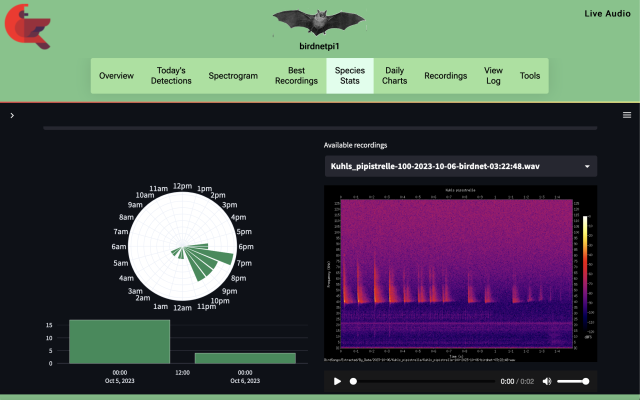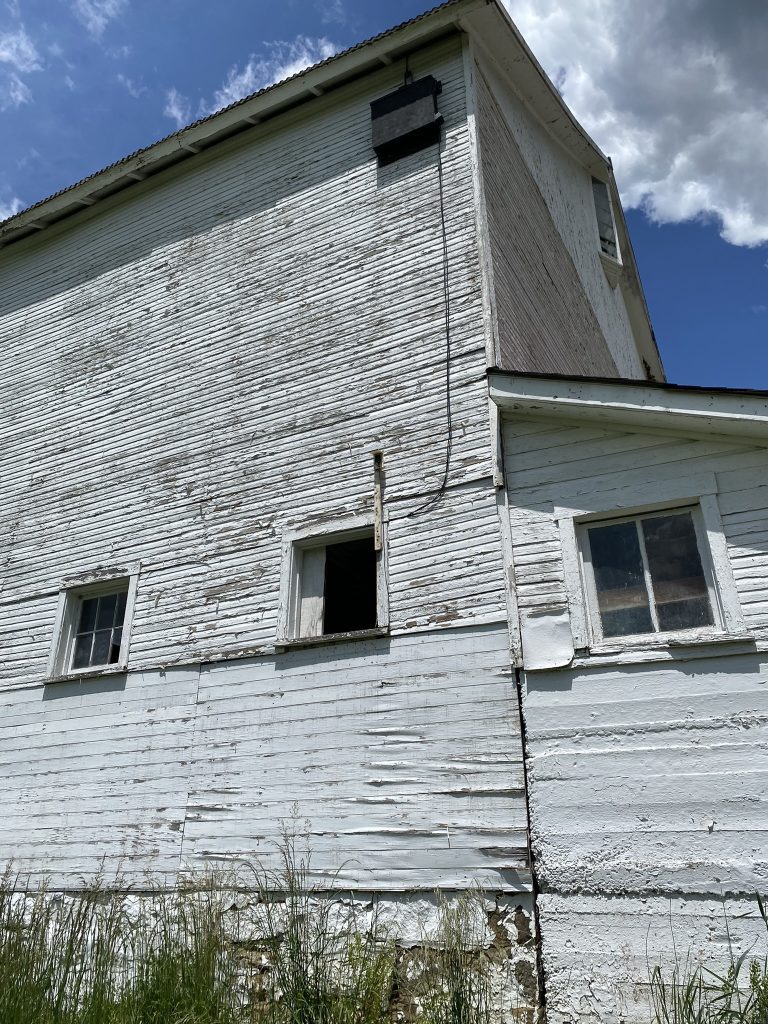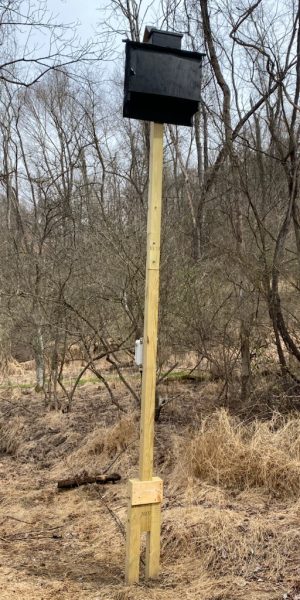Real-time Acoustic Bat Classification
About Bat Echolocation
Bat acoustics, also known as echolocation, is a sophisticated sensory system employed by bats to navigate, locate prey, and perceive their surroundings in darkness. Bats emit high-frequency sound pulses through their mouths or noses, which bounce off objects in their environment. By analyzing the returning echoes, bats can determine the distance, size, shape, and even texture of objects, enabling them to navigate with remarkable precision. This ability allows bats to hunt for insects or other prey in complete darkness, avoiding obstacles and predators. The echolocation calls vary among species, tailored to their specific ecological niche and hunting strategies, making bat acoustics a diverse and adaptable sensory mechanism crucial for their survival. Understanding bat acoustics not only sheds light on the fascinating abilities of these nocturnal creatures but also has practical applications in fields such as bio-inspired technology and conservation efforts.
Automated Real-Time Bat Detection
A bat detector is a device designed to detect and convert the ultrasonic echolocation calls of bats into audible frequencies that humans can hear. These calls, emitted by bats for navigation and hunting, are typically beyond the range of human hearing. Bat detectors use ultrasonic microphones to capture these high-frequency sounds, which are then processed and converted into audible signals through a process called heterodyning or frequency division.
BattyBirdNET-Pi, developed by Dr. Richard Zinck of Munich Germany is an automated classification of bat calls. It builds upon the work of the BirdNET open source product family that has a similar aim for birds. The BirdNET systems are using a sampling frequency that is too low to capture bat echo location calls. So here it uses the system at significantly higher sampling rates of 256kHz (default) and cross train a classifier on the BirdNET artificial neural networks to identify bats. Think of a bat as a bird singing three times as fast. Once such a cross trained bat network has the necessary performance, It is intend to integrate it into the BirdNET-Pi framework in order to run them 24/7 in self-assembled recoding stations. You can most definitely already use the bat trained classifier with the analyzer scripts to assist (do not just rely on it for e.g. biodiversity assessments) in identifying bat calls.
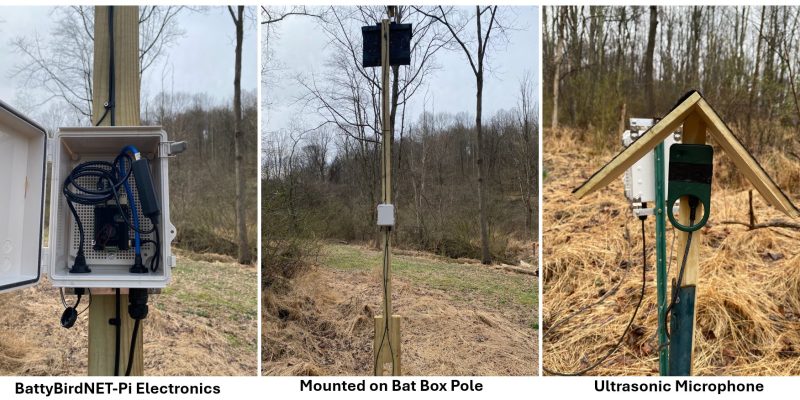
BattyBirdNET-Pi Software
Real-Time Automated Bat Classification Stations
PixCams, Inc. has installed two of the BattyBirdNET-Pi real-time automated bat classification systems in Murrysville, PA. These units are located on our bat boxes that include a live streaming cam inside the bat box. We installed the ultrasonic microphones made by AudioMoth on top of the bat boxes in order to get the microphones near the level where the bats are flying at night.
Schwarz Barn Bat Classification Station
Bat Classification Station 1
Bat Classification Station 2
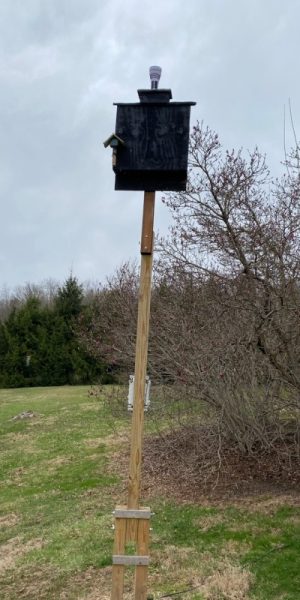
Bat Box 2: BattyBirdNET-Pi Acoustic Classification Station 2
Weather Station: Tempest Wireless Weather Station on Weather Underground
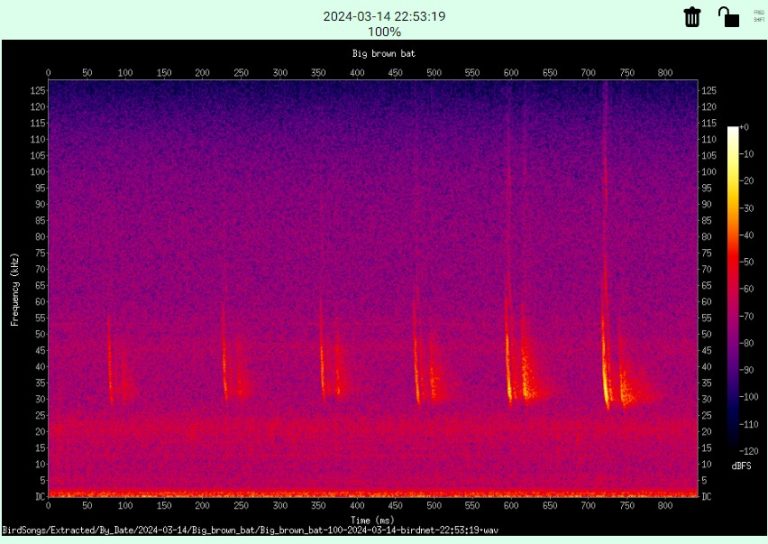
Big Brown Bat Spectrogram Captuend with BattyBirdNET-Pi
Bat Species in Pennsylvania
Bats are the only mammals that fly. Their wings are thin membranes of skin stretched from fore to hind legs, and from hind legs to tail. The name of their order, Chiroptera, means “hand-winged.” Their long, slender finger bones act as wing struts, stretching the skin taut for flying; closed, they fold the wings alongside the body. Pennsylvania bats range in size from the hoary bat (length, 5.1 to 5.9 inches; wingspread, 14.6 to 16.4 inches; weight, 0.88 to 1.58 ounces) to the tri-colored bat (length, 2.9 to 3.5 inches; wingspread, 8.1 to 10.1 inches; weight, 0.14 to 0.25 ounces). Nine species of bats regularly occur in Pennsylvania; six hibernate in Pennsylvania and three primarily migrate south for the winter. Two additional species, evening bats and Seminole bats, are rare visitors from the South.
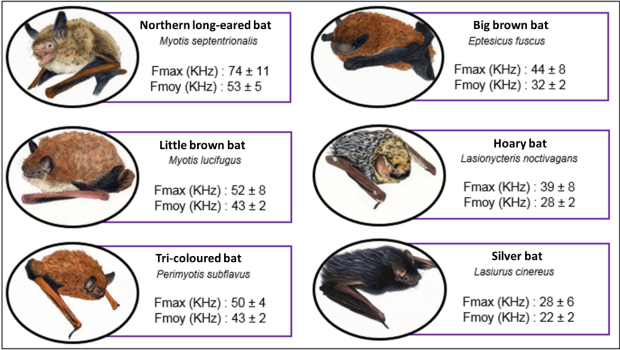
Eastern US Species
More information: Eastern US
| Echolocation frequency (max energy) | Common name | Species |
|---|---|---|
| 21 kHz | Hoary bat | Lasiurus cinereus |
| 28 kHz | Free–tailed bat | Tadarida brasiliensis |
| 29 kHz | Northern yellow bat | Lasiurus intermedius |
| 29 kHz | Silver–haired bat | Lasionycteris noctivagans |
| 32 kHz | Big brown bat | Eptesicus fuscus |
| 31 kHz | Townsend’s big–eared bat | Corynorhinus townsendii |
| 33 kHz | Rafinesque’s big–eared bat | Cornorhinus rafinesquii |
| 40 kHz | Evening bat | Nycticeius humeralis |
| 43 kHz | Seminole bat | Lasiurus seminolus |
| 44 kHz | Little brown bat | Myotis lucifugus |
| 44 kHz | Tri-colored bat | Perimyotis subflavus |
| 44 kHz | EasternRed Bat | Lasiurus borealis |
| 44 kHz | Indiana bat | Myotis sodalis |
| 46 kHz | South-eastern myotis | Myotis austroriparius |
| 48 kHz | Gray bat | Myotis grisescens |
| 49 kHz | Eastern small–footed myotis | Myotis leibii |
| 51 kHz | Northern long-eared myotis | Myotis septentrionalis |
Little Brown Bat
The little brown, is found statewide. Length, including the tail, is 3.1 to 3.7 inches; wingspread, 8.6 to 10.5 inches; weight ranges from 0.25 to 0.35 ounces, and is greatest just before hibernation. Females are slightly larger than males. Color: a rich brown approaching bronze, usually with a dark spot on the shoulders. The fur is dense, fine and glossy; the wings are black and bare.
This bat eats a wide variety of flying insects, including nocturnal moths, bugs, beetles, flies and mosquitoes. Insects are regularly caught with the wing or tail membrane, and transferred to the mouth. An individual emerges from its day roost at dusk, and usually seeks a body of water, where it skims the surface for a drink, and then hunts insects. Bats examined within an hour of taking flight often have full stomachs weighing one-fifth of their body weight. The little brown bat makes several feeding flights each night, and is capable of catching 1,200 insects per hour. A nursing female may eat her own weight in insects nightly.
In October and November, little brown bats leave their summer roosts and move to tunnels, mine shafts and caves. Here, clinging to the ceilings and clustered against one another, they hibernate. In spring, they emerge in April and May. They return to the same hibernation and summer roost sites year after year.
Females disperse from the hibernation roosts, and gather in summer nursery colonies of 10 to 1,000 individuals in attics, barns and other dark, hot retreats. Males are solitary, roosting in hollow trees, under loose bark, behind loose siding and shingles and in rock crevices.
A single young is born to each female in June or early July. After four weeks, the young bat is fully grown, and ready to leave the colony. Females mature sexually at about eight months of age, while males mature in their second summer. Little brown bats might live more than 30 years.
Northern Long-Eared Bat
Similar in size and color to the little brown bat, the northern long-eared bat can be distinguished by its longer tail and narrower and longer ears. It ranges in forested areas throughout the state, but is much less common than the little brown bat; its distribution is considered local and irregular. Length, 3 to 3.7 inches; wingspread, 9 to 10.7 inches; weight, 0.25 to 0.32 ounces.
Biologists have learned little of the ecology and behavior of the northern long-eared bat, although they suspect feeding habits are similar to those of the little brown. Long-eared bats roost singly or in small colonies in caves, behind window shutters, under loose tree bark and in cliff crevices. Female long-eareds gather in nursery colonies in attics, barns and in the cavities or beneath the bark of trees. Probably, a single young is born in July. Long-eared bats return to caves in fall, often sharing space with little brown bats, big brown bats and tri-colored bats.
When all of Pennsylvania’s main hibernation sites became contaminated with white-nose syndrome, 99 percent of the long-eared bats using those locations died. Long-eareds being seen on summer landscapes are believed to have survived due to an individual preference for solitary, non-traditional hibernation sites.
Indiana Bat
The Indiana bat resembles the little brown bat, but has a pinkish cast to its fur, giving it a light purple-brown coloration. Length, 2.9 to 3.7 inches; wingspread, 9.4 to 10.3 inches; weight, 0.18 to 0.28 ounces. Sexes are equal in size.
Indiana bats roost in trees in summer; and rarely are found to roost in buildings. In winter, some 97 percent of the total species population hibernates in certain large caves in Missouri, Kentucky, Indiana and Illinois. Pennsylvania is on the fringe of the species’ range. In our state in recent years, Indiana bats have been found wintering in 19 sites (limestone caves, abandoned mines and tunnels). Populations of Myotis sodalis are dwindling throughout its range, and it is on the federal endangered-species list. Following major declines due to white-nose syndrome, there were as few as 25 known left hibernating in the state in late 2015.
The Indiana bat hibernates in clusters of about 250 bats per square foot on the ceilings and side walls of caves. In this formation, the bats are vulnerable to disturbance by cave explorers: when a bat on the edge of the cluster is awakened, it moves about, starting a ripple of activity that spreads throughout the group. A winter of repeated disturbances causes bats to burn vital fat stores, and they might run out of energy before spring.
Females of this species are believed to bear a single young in late June. Feeding habits are probably similar to those of the little brown bat.
Small-Footed Bat
This species is one of the smallest in North America: length, 2.8 to 3.3 inches; wingspread, 8.3 to 9.7 inches; weight, 0.18 to 0.28 ounces. As the name implies, it has a very small foot when compared with other bats. When viewed from the front, the bat has a distinct black mask that stretches from ear tip to ear tip. In Pennsylvania, this bat is rare, and the population is thought to be decreasing. It is included on Pennsylvania’s threatened-species list. Summer roosts are primarily rock cliffs, boulder fields, rock-strewn abandoned mine lands and even rocky road cuts. On rare occasions, they might be found in buildings or tree cavities.
The small-footed bat resembles the little brown bat, but has a golden tint to its fur. Feeding and breeding habits probably parallel those of the other small, closely related bats. The small-footed bat waits until November to enter caves for hibernating, and emerges in March. It hibernates in narrow cracks in the wall, floor or roof, singly and in groups of up to 50 or more. It usually stays close to entrances where the temperature is just above freezing.
Silver-Haired Bat
A medium-sized bat: length, 3.7 to 4.5 inches; wingspread, 10.5 to 12.1 inches; weight, 0.25 to 0.35 ounces. The fur is soft and long; the sexes are colored alike, blackish-brown tipped with white, for a bright, frosted appearance.
The silver-haired bat inhabits wooded areas bordering lakes and streams. It roosts in dense foliage, behind loose bark or in a hollow tree – rarely in a cave. It begins feeding earlier than most bats, often before sunset. Silver-haired bats do not hibernate in Pennsylvania, migrating farther south. In summer, a few may breed in the cooler, mountainous sections of the state, but most go farther north.
Tri-colored Bat
The tri-colored bat, previously known as the eastern pipistrelle, also is called the pygmy bat because of its small size: length, 2.9 to 3.5 inches; wingspread, 8.1 to 10.1 inches; weight, 0.14 to 0.25 ounces. Its fur is yellowish brown, darker on the back. The back hairs are tri-colored: gray at the base, then a band of yellowish brown, and dark brown at the tip.
Tri-colored bats take wing early in the evening and make short, elliptical flights at treetop level. In summer, they inhabit open woods near water, rock or cliff crevices, buildings and caves. They hibernate from September through April or early May, deep inside caves and away from the openings, in zones where the temperature is about 52 to 55 degrees. They sleep soundly, often dangling in the same spot for months.
Tri-coloreds eat flies, grain moths and other insects. They breed in November, and young – usually two per litter – are born in June or July. Tri-coloreds live 10 to 15 years and are found throughout Pennsylvania, except in the southeastern corner.
Big Brown Bat
Second in size to the hoary bat, the big brown is 4.1 to 4.8 inches long; wingspread, 12.1 to 12.9 inches; weight, 0.42 to 0.56 ounces. The fur is dark brown, and the face, ears and flight membranes are blackish. Pennsylvania’s most common bat, the big brown ranges throughout the state in diverse habitats: attics, belfries, barns, behind doors and shutters, hollow trees, in city and country.
Big brown bats fly at dusk, and generally use the same feeding grounds each night. They fly in a nearly straight course 20 to 30 feet in the air, often emitting an audible chatter. Major foods include beetles and true bugs (junebugs, stinkbugs and leafhoppers), many of which are major agricultural pests. A colony of 150 big brown bats can eat enough cucumber beetles during the summer to protect farmers from 18 million rootworm larvae.
Among the last bats to enter hibernation, big brown bats seek out caves, buildings, mines and storm sewers in October, November or December. They hang close to the mouths of caves. They emerge in March and April. Females bear young in June, usually two per litter. As young mature and leave the nursery colony, adult males enter and take up residence. Big brown bats have lived up to 19 years in the wild.
Red Bat
A bright rusty coat and long, pointed wings distinguish this species. Length is 3.7 to 4.8 inches; wingspread, 11.3 to 12.9 inches; and weight, 0.28 to 0.49 ounces. Individuals roost singly in trees (except for females with young), often on forest edges, in hedgerows and shrubby borders; they seem to prefer American elms. Rarely do they use caves or buildings.
Red bats start flying early in the evening, preying on moths, flies, bugs, beetles, crickets and cicadas, which they take from air, foliage and ground. Strong fliers, red bats are considered migratory, although their patterns are little known. The sexes may migrate separately. Red bats start south in September or October, flying at night. They can withstand body temperatures as low as 23 degrees.
Females bear one to five young (usually two or three) in their treetop roosts. For the first few days, the young remain clinging to their mother when she flies out on hunts. Young are able to fly at three to four weeks, and are weaned when five to six weeks old. Longevity is about 12 years. The red bat ranges across Pennsylvania.
Hoary Bat
The largest bat of the Eastern forests, the hoary is 5.1 to 5.9 inches long; has a 14.6 to 16.4-inch wingspread; and weighs 0.88 to 1.58 ounces. The fur is dark brown, heavily tinged and white. The species ranges across the state, but is uncommon.
Hoary bats roost in trees. They prefer conifers, but also use deciduous trees in woodlots, forest edges and farmland. They choose protected sites 12 to 40 feet above the ground. Strong, swift fliers, they take to the air later than most other bats. They prey mostly on moths, but also take beetles and mosquitoes.
Hoary bats migrate to warmer climates in winter. In spring, they return and raise young. The young are born from mid-May to early July, usually two to a litter. Females have two pairs of breasts and sometimes have three or four pups in a litter. The female gives birth while hanging in a tree. Young grow rapidly and are able to hunt for themselves in about a month.
Note: The Seminole Bat (Lasiurus seminolus) and Evening Bat (Nycticeius humeralis) have been found a few times in Pennsylvania, but are not considered regular residents. In recent years, more than a dozen Seminole bats have been found dead underneath Pennsylvania wind turbines and three pregnant Evening bats have been captured during the mid-summer maternity season.


